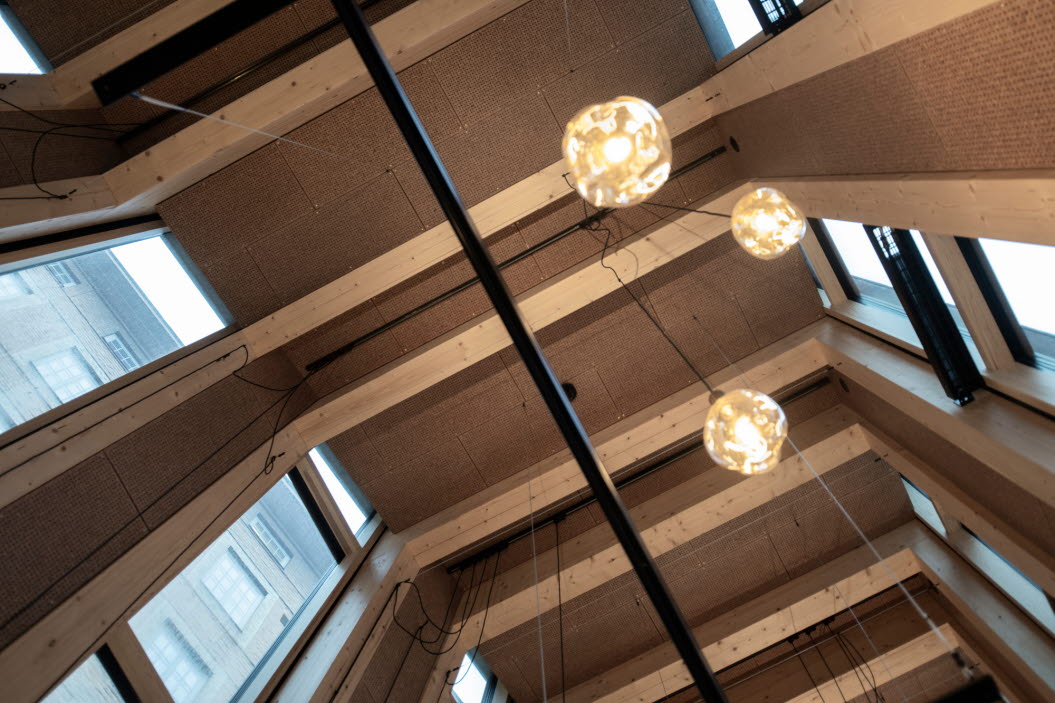Aesthetic designs in wood for body and soul
As sustainability becomes increasingly important in the construction sector, interest in wood as a building material has grown. We know that the climate usually benefits from a project being built in wood. But does the use of natural materials have direct health benefits too? We discussed what makes wood unique with Karin Löfgren PhD, architect and sustainability manager at AIX Arkitekter.
What would you say is the relationship between wooden buildings and wellness?
Wood has an incredible ability to create a pleasant environment and a sense of well-being. It’s very much about the natural properties of the material – its scent, texture and ability to regulate humidity. The direct link between wood and the forest also sends positive signals to many of us. I believe proximity to nature can be particularly important at a time when many people feel increasingly detached from the real world, engaging through screens. Importantly, wood is also renewable, so it can play a part in making the construction industry more sustainable, provided it’s used properly.

Karin Löfgren PhD, architect and sustainability manager at AIX Arkitekter.
Architects and designers have an important role to play
What reactions do you get to the wooden buildings you design?
The response is consistently positive. Many people find wooden buildings calming and harmonious, and we know that both residents and visitors appreciate the aesthetic value of wood. It’s a flexible material with the practical advantage that it’s easy to maintain and refresh – by sanding a wall, for example, instead of having to replace it. We often hear how wood creates a warmer and more inviting atmosphere than many other materials, but it shouldn’t be forgotten that the symbolic value of wood is very different in different territories and cultures.
What are some of the misconceptions about wood construction?
One common misconception is that wooden buildings are less durable or they’re a fire hazard. In fact, modern wooden structures are very robust and are designed to meet all safety standards. Wood can be maintained and renewed in a way that other materials can’t. We’re also seeing a sea change in the way people think about wood – from something rather traditional to an innovative and sustainable solution. As architects and structural engineers, we have an important role to play in recognising the natural movements and properties of wood. Proper detailing and maintenance can help prevent damage and significantly extend the life of buildings.
What would you like to see more of in wooden architecture?
More exposed wood in interiors! I’m convinced that wood can have positive effects on people’s well-being, but many modern wooden buildings hide the material behind plaster and other finishes, which is a shame. Sometimes this is done to meet fire regulations, but just as often it’s due to uncertainty about how to handle the material. I hope that in the future we’ll see more buildings where the natural beauty and properties of wood are fully embraced.
What do you see as the future of wood construction?
We’re seeing a growing willingness to use wood in more construction projects, from housing to public buildings and commercial properties. But it’s crucial that we continue to develop knowledge and techniques to optimise the use of wood, so that we build sustainably from both an ecological and an economic perspective. The issue of sustainable forestry and responsible use of wood is more relevant than ever, and we all have a responsibility for the balance between forestry and building. We shouldn’t be focused simply on building with wood, but also on how to build beautiful wooden buildings resource-efficiently and responsibly.
Finally, if you could give one piece of advice to architects and developers who want to work more with wood, what would it be?

Try and understand the potential of the material, including from a health perspective. Wood is not only a sustainable building material that − with the right design − changes and improves over time, but also a material that I believe can improve people’s quality of life. If we work thoughtfully with wood in design and construction, I’m convinced that we can create buildings that are not only aesthetically pleasing, but also good for both body and soul.

